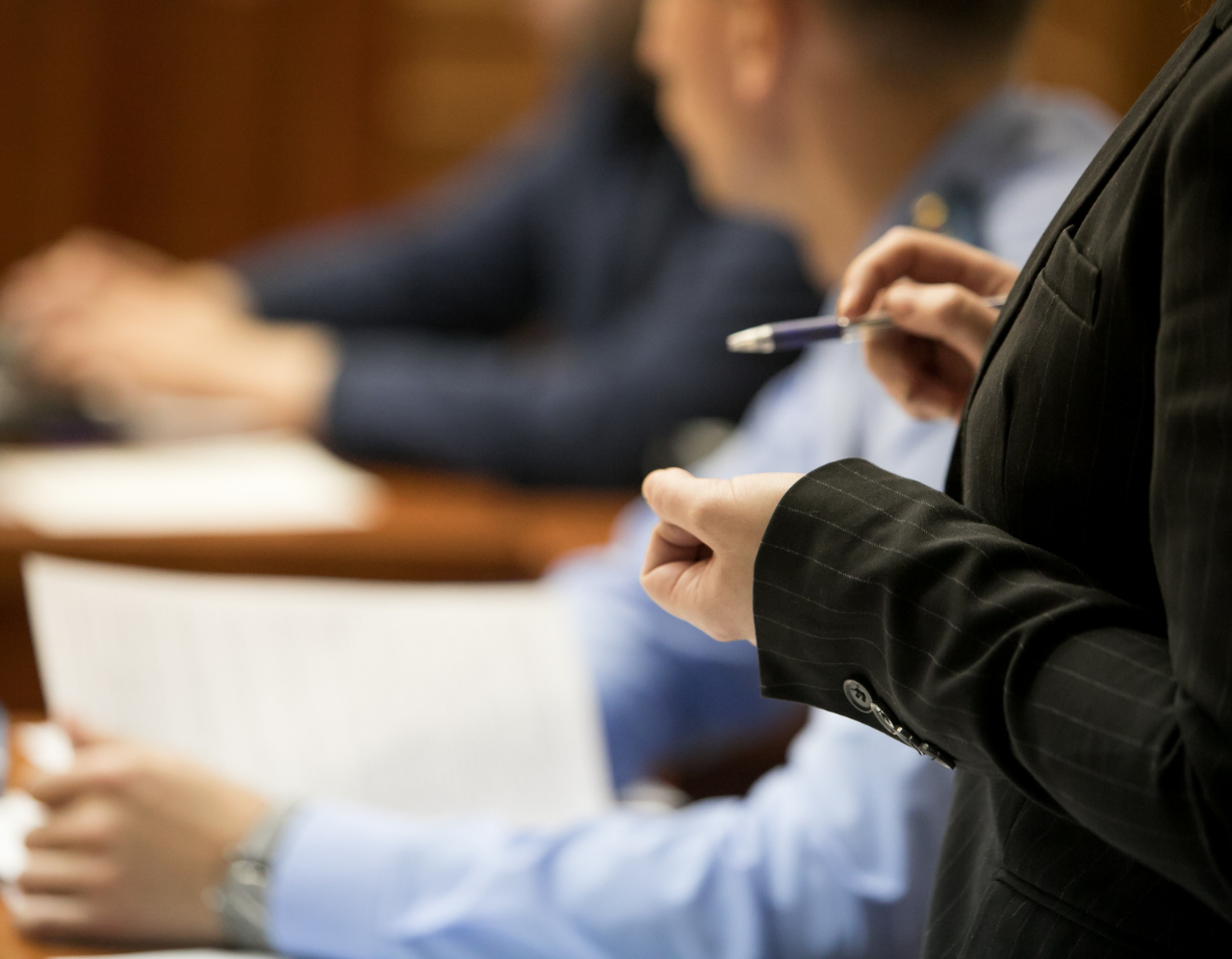Browsing the Complexities of Trial Presentations: Tips for Seamless Shipment and Engaging Arguments
In the realm of lawful proceedings, the art of trial discussion stands as an important determinant of success. As lawyers navigate the detailed web of court room dynamics, the capability to perfectly supply arguments and proof while captivating the court's attention ends up being paramount. The intricacies inherent in trial discussions require a fragile equilibrium of skill, method, and finesse. By developing strategies that ensure a refined distribution and crafting compelling arguments that reverberate with the target market, lawyers can substantially boost their advocacy. In a world where persuasion preponderates, grasping the details of trial presentations is not merely a choice yet a need for those seeking to prevail in the court.

Comprehending Trial Goals
To successfully browse a trial, it is essential to have a clear understanding of the goals that require to be attained. Prior to stepping into the court, legal groups have to specify their goals and desired outcomes. These goals work as assisting concepts throughout the test, forming approaches and influencing decision-making processes.
Understanding trial objectives includes a detailed evaluation of the situation, lawful precedents, and the client's finest rate of interests. Trial Presentations. It requires a precise assessment of the facts, determining essential problems, and expecting prospective difficulties. By setting particular and measurable objectives, lawyers can tailor their presentations and arguments to straighten with the wanted outcomes
Additionally, a clear understanding of trial purposes makes it possible for lawful teams to prioritize evidence, witnesses, and lawful disagreements successfully. It permits the development of a systematic story that resonates with the discretionary, enhancing the overall instance discussion.

Organizing Evidence Effectively
Having a clear understanding of trial purposes lays the structure for arranging proof successfully in legal proceedings - Trial Presentations. By straightening the presentation of evidence with the desired end results of the test, legal teams can reinforce their debates and improve their persuasiveness. One important element of arranging evidence is categorization. Grouping proof based on themes or importance to certain legal components can assist improve the discussion and make complicated info more absorbable for the judge or court.
An additional secret element in organizing proof efficiently is establishing a sensible flow. Offering evidence in a systematic and sequential fashion can aid build an engaging narrative that supports the lawful arguments being made. In addition, using aesthetic aids such as charts, timelines, or charts can further improve the company of evidence and help in making clear complex connections or series of occasions.
In addition, making sure that all proof presented is acceptable and pertinent to the situation is crucial. Inadmissible or pointless proof can detract from the strength of the debate and possibly hurt the trustworthiness of the here and now party. A careful testimonial and option procedure should be carried out to include only the most impactful and lawfully sound evidence in the trial discussion.
Crafting Influential Stories
Crafting engaging narratives plays a pivotal role in presenting influential arguments during legal proceedings. A well-crafted narrative has the power to mesmerize the audience, evoke emotions, and eventually persuade the decision for today celebration. When building a narrative for a trial presentation, it is necessary to develop a clear storyline that highlights crucial points and links them in a meaningful way. Begin by describing the facts of the case in a compelling manner, ensuring that the series of occasions is very easy to comply with. Introduce characters efficiently, providing background info that assists the target market understand their inspirations and actions. Additionally, including dazzling summaries and appealing language can bring the click for source narrative to life, making it extra remarkable for the court and jury. By weaving with each other evidence, testimony, and legal disagreements into a cohesive and persuasive story, lawyers can effectively support for their clients and boost the probability of a beneficial outcome in the court room.
Understanding Visual Help
Reliable use of aesthetic aids is vital to enhancing the effect and quality of test presentations. Visual help, when made use of strategically, have the power to streamline intricate information, strengthen bottom lines, and leave a long lasting impact on the discretionary. To master visual help in test discussions, it is essential to make sure that they are clear, succinct, and pertinent to the arguments being made.
When incorporating visual aids, such as graphes, charts, timelines, or pictures, view it now right into a test discussion, it is necessary to keep them visually appealing yet expert. The visuals should enhance the verbal debates, offering a visual representation of the info being talked about without overwhelming the audience with unnecessary details.
Moreover, exercising with the visual aids beforehand is crucial to ensure a seamless distribution during the test. Acquainting oneself with the web content, transitions, and timings of each aesthetic aid can assist preserve the circulation of the presentation and prevent technical glitches that might arise.
Delivering Impactful Closing Debates
A compelling closing debate acts as the culmination of a test discussion, enveloping the core narrative and convincing the discretionary towards a beneficial decision. To deliver an impactful closing debate, it is critical to succinctly evaluate essential points, highlight the toughness of your situation, and deal with any weak points in a tactical manner. Begin by laying out the primary arguments that sustain your customer's setting, emphasizing why their website the proof presented throughout the test supports your story. It is vital to produce a feeling of cohesion and quality, assisting the judge and court towards the wanted conclusion.
Furthermore, integrating psychological charm can even more reinforce your closing debate. Ultimately, a well-crafted closing argument ought to leave a long lasting perception, engaging the court and court to rule in your client's favor.
Final Thought
Finally, understanding test discussions entails recognizing goals, arranging evidence, crafting narratives, using visual aids, and delivering impactful closing arguments. By executing these techniques efficiently, lawyers can present their case seamlessly and make engaging debates in the court room. It is critical to browse the intricacies of trial presentations with precision and ability to attain success in legal procedures.
By aligning the discussion of proof with the preferred outcomes of the trial, lawful teams can strengthen their debates and improve their persuasiveness (Trial Presentations). To master aesthetic help in trial presentations, it is critical to make certain that they are clear, succinct, and relevant to the debates being made
An engaging closing argument offers as the conclusion of a trial discussion, enveloping the core narrative and encouraging the judge and jury in the direction of a positive decision. Begin by laying out the primary arguments that sustain your client's placement, highlighting why the evidence provided throughout the trial sustains your narrative.In verdict, grasping test presentations entails comprehending objectives, arranging evidence, crafting stories, utilizing aesthetic aids, and providing impactful closing arguments.